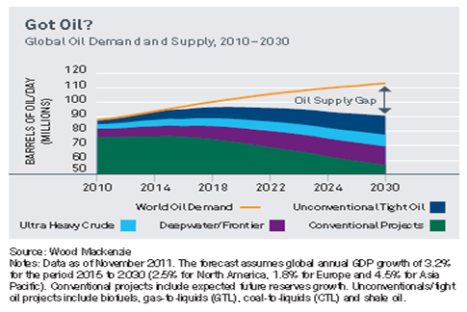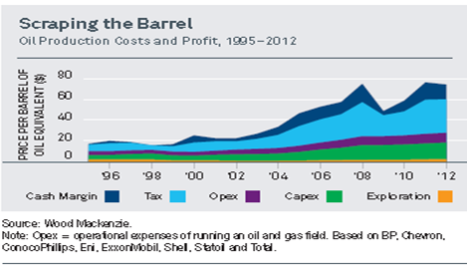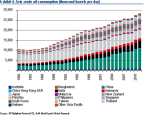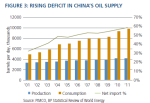From: aditya rana
Date: Sat, Mar 23, 2013 at 2:43 PM
Subject: Why Invest in Natural Resources and Why a High-Carb & Low Fat diet – Part 3!
Hi!,
Allocating a significant weighting to commodities has been a regular long-term investment theme in my newsletters – driven in part by the growing demand for commodities from the developing world outpacing the supply of commodities, as well as a hedge against the continued balance sheet expansion by central banks around the world and to protect against the possibility of higher inflation in the future. How does this view get impacted by the ongoing shale oil revolution in the U.S., which has led many commentators to predict a decline in energy and commodity prices over the medium-term? While the shale oil revolution in the U.S. has resulted in increasing the supply of energy, it is unlikely to alter the long-term outlook for energy, as argued by Jeremy Grantham ( http://www.charlierose.com/view/interview/12812 ) , energy specialists Wood Mackenzie, Bernstein research, and others. To summarise some of their key points:
-Wood Mackenzie forecasts a supply gap of 20 million barrels per day by 2030 that will need to be bridged by yet-to-be delivered resources. This forecast is based on world GDP growth rate of 3.2%, assuming 2.5% for the U.S., 1.8% for Europe and 4.5% for Asia-Pacific.
-While Bernstein Research thinks the renaissance in US liquid oil production has been remarkable, growing by over 1m/d over the last three years to reach 8.5m/d in 2012, and expect oil production to reach 10.5m/d by 2015, making it comparable to Saudi production only for a brief period. However, by 2020 they forecast that US production will have declined back to 9m/d.
-They note that shale liquids plays are far rarer than their related shale gas plays, and are already seeing declines in some of the big oil fields, highlighting the early onset of maturity in some of these fields as a typical well reaches “stripper” status within 6 years and can only deliver a quarter of the expected output during its post-peak “stripper” phase.
-Wood Mackenzie note that the cost of producing an oil barrel has been steadily increasing over the last few decades (as illustrated in the graph below), reaching almost $80 per barrel, and this trend is unlikely to change in the coming future, thereby putting an increasing floor below oil prices.
-As Grantham notes in a recent interview (with Charlie Rose), ever since digging the first coal mine in the U.K. circa 1800, mankind has benefited vastly from the abundant and cheap supply of stored sunlight in the form of fossil fuel – i.e. coal, oil and natural gas. This has provided approximately a 250 year window of cheap energy which is fast depleting due to rapid population and economic growth.
-The rise in commodity prices from 2002 until 2008 reversed the entire price decline over the previous 100 years, and was larger than even the spike during WW 11. A paradigm shift seems to have taken place in commodity prices.
-China demand for natural resources has been increasing by 10% per annum, reaching almost 50% of the world demand for commodities like coal, cement and iron ore, and putting enormous pressure on the supply of natural resources. Even a slow-down of their growth rate to 7% will require huge amount of additional natural resources – i.e. another 47% of current coal production in 10 years.
-China’s growth is very energy intensive (with oil demand doubling over the last 10 years – and doubling again during the previous decade – see attached charts), and has played a big part in the four-fold increase in the price of oil from $25 in 2000 to $100 today. Energy also forms about 50% of the cost structure for other natural resources, implying an additional impact on their prices as energy prices continue to rise.
- image008
- image007
Making long-term predictions on commodity prices is notoriously difficult, but the impact of the economic growth of 1.3 Billion people in China (and that is not even adding 1.2 Billion people in India!) on natural resources cannot be underestimated. While commodity prices in the near term may be subject to their typical boom and bust cycles, the medium to long-term uptrend is likely to continue providing a solid rationale to keep a significant portfolio weighting in natural resources (and energy in particular) – both via the actual commodities and commodity stocks.
Why a High Carbohydrate & Low-Fat diet? – Part 3.
Two weeks ago I wrote about the remarkable life-story of Nathan Pritikin, a pioneer in the field of diet and health, who argued the case for a largely vegetarian high complex-carb diet to battle heart and other chronic diseases. This week I present below the third part of the summary of a path-breaking article (“High Carbohydrate Diets; Maligned and Misunderstood”) he wrote in the Journal of Applied Nutrition in 1976, whichstill resonates today!
-While a high-carb/low-fat diet might prevent and reverse diabetes and heart disease, it has been argued that a diet which depends 80% of its calories on natural carbohydrates would destroy health and vigour because vegetable proteins are incomplete.
-This erroneous concept was fostered by a study in the early 1900s, when studying rats, the researchers concluded that plant proteins have a lower PER (protein efficiency ratio) than animal protein. This study, and other subsequent studies, showed sub-optimal growth in rats fed on vegetable protein and assumed that this would be true for humans as well.
-However, the nutritional needs of rats and humans are very different, supported by the fact that human milk is only 1.2% protein compared with 12% protein for rat’s milk.
-Subsequent studies on humans clearly demonstrated that 1) vegetable proteins are as adequate as animal protein for humans, and, 2) the amount of protein required by humans has been overstated. The so called protein shortage in diets in some parts of the world, is really a calorie shortage, because if a diet is insufficient in calories, the body will use the protein first as calories, and protein second. This applies to vegetable and animal protein.
-One of the studies which took place in a hospital in Texas, infants from 5 to 14 months were fed diets consisting of either milk or various combinations of vegetable protein (having the same amount of calories and protein content) , and they showed no difference in growth rates or protein retention.
-Another study at Purdue University put male students aged 20 to 27 on three different diets for 59 days – only white rice, 85% rice and 15% chicken, and 70% rice and 30% chicken – with total protein at 6.5% of total calories (which is far less than what is considered normal). The 30% chicken diet had 13% protein retention, the 15% chicken diet had 11% protein retention while the rice only diet had the highest – 13.5% protein retention.
-Tables depicting the biological value of protein foods, for example showing eggs have a value of 94% and potato of 67%, are constructed based on rat studies and not on humans.
-The Tarahumara Indian of Mexico are famed for their wooden kickball races. Men run, kicking a small wooden football, for 48 hours continuously covering 180 miles in the process. A study authenticated the following:
-A 500 mile round trip run in 5 days.
-Carrying a 100 pound pack for 110 miles in 70 hours.
-Indian women playing the kickball game and running continuously for 50 miles.
-The Tarahumara diet consists of 10% protein, 10% fat and 80% complex carbohydrates and comprises corn, peas, squash and various native plants and fruits. Animal protein is eaten about a dozen times a year.
-The average 40-year Taramuhara man 5’7” weighs 125 pounds with cholesterol level in the 100 – 130 mg range, and examinations by various physicians have shown them to be completely free of heart disease, hypertension or diabetes. In addition, there are no fat Taramuharas.
-When a similar diet was followed by obese men in a California study, they experienced substantial weight loss. When fat intake is drastically reduced, it is hard to consume enough calories to create weight gain.
To be continued!
Here is to disregarding the “protein shortage in vegetarian diets” myth!
Regards,
Aditya
Filed under: Uncategorized |






Leave a comment